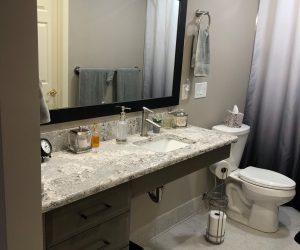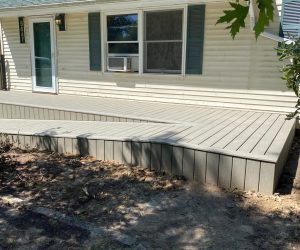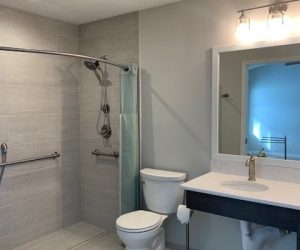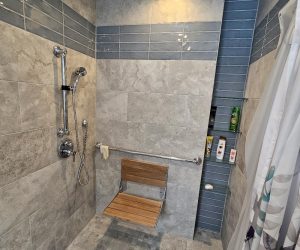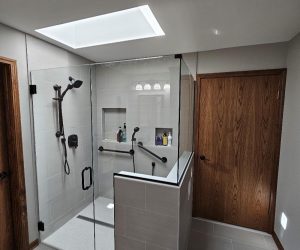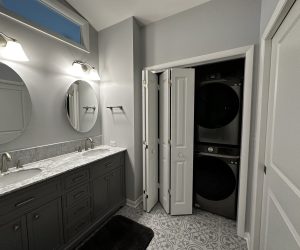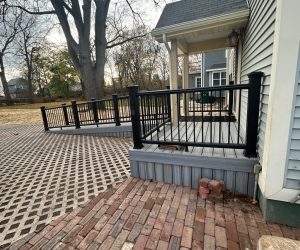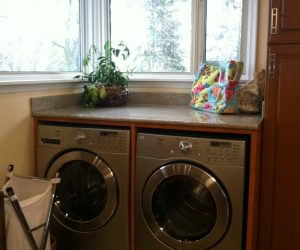Certified Aging In Place (CAPS)
What is Aging in Place?
Aging in Place is a phrase that has been steadily growing in the public eye as more and more people seek to stay in their home for as long as possible. Maintaining independence and living in the house they’ve called home for decades are areas of great importance to the 55+ demographic. Unfortunately, the disabilities and diseases that often accompany old age can make it difficult or impossible to live in your current house. That is where an aging in place remodel comes in.
Aging in place can be defined as modifying your home based on your current and anticipated needs in order to make living there as comfortable and easy as possible. A well-executed remodel should address all the areas of your home where you or a family member is struggling with daily tasks due to a disability or age. It is important for you and your contractor to review what your needs are now and what they will be down the road so that your project covers all your needs. If you decide to “future-proof” your house now you won’t have to do another remodel in the future and you will have more time to enjoy your upgrades.
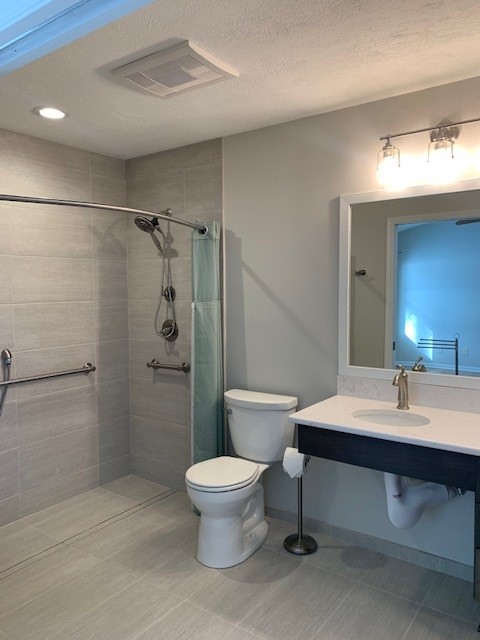
Examples of Aging in Place Improvements
Hundreds of modifications can be made to your home to make it more accessible. A common example could include relocating the light switches, thermostats, and electrical outlets around the house from their standard heights to a more comfortable level for a family member in a wheelchair. If you or a family member have limited access due to narrow doorways it can be a good decision to remove the doors themselves and widen the frame past a traditional width to allow easier passage. Some other examples of aging in place improvements are:
- Reinforcing walls and installing grab bars for safe support in and out of the bath, shower, or anywhere else.
- Stairlift systems that stow out of the way when not in use but are available quickly whenever you may need to get to a different level of the house.
- Moving amenities such as the washer and dryer from the basement up to the main level.
- Zero-step entrances and specialty door frames can be integrated into nearly every entryway.
- Build a gradual ramp sloping up from the ground to the entrance without blocking the existing steps.
- A popular option in the bathroom is a step-in shower or even a zero-clearance shower, where the floor blends seamlessly into the shower. It does require additional waterproofing and framing but can be a great option for homeowners who need full wheelchair accessibility.
- And many other options!
“Should I Remodel My Home for Accessibility?”
Analyzing these four factors can help put in perspective if you should undertake remodeling your home for accessibility reasons or consider choosing an alternative living situation.
Cost – Budget is often a factor in this decision whether we like it or not. Lots of modern equipment is expensive and a project with a large scope can get costly in a hurry. Some retrofits like moving the light switches down lower require secondary work including drywall patching and painting that you might not consider initially but that take extra labor.
Length/Degree of Disability – This one is part common sense and part predicting the future. If you had a bike accident and have a fractured leg for 2 months but are otherwise as healthy as ever, it probably is not the best idea to put in a $10,000 stairlift! However, if you have a condition that is slowly and predictably worsening then it’s an option to meet challenges ahead of time and be prepared.
Time in Home – Consider how long you plan on living in the home you are thinking about modifying. What if you move in two years for retirement or to be closer to a family member or any other change in circumstances? A good rule of thumb is to plan on staying in the home you’re remodeling for at least the next five years.
Location – Do you need to live in an area for your career or could you work remotely in a house that is better suited to your needs? Is your family nearby and you want to stay near them? Even loving where you live is a great reason to stay in your current house or area. Moving can be a hassle, too. If nothing is tying you to a certain location and you’re thinking about a move – hold off on any significant projects until that decision has been made.
What is the Process for Remodeling?
Remodeling can be a stressful process, but a good contractor can make it as pain free and nonintrusive as possible. Though everyone has a unique set of wants and needs, there is a general process or checklist that you should make sure to check before signing with a contractor:
- Wants/Needs Analysis – an in-depth look at what condition your house is currently in and what your needs are (and will be in the future)
- Proposal – a firm price for all your necessary improvements that you can budget around with confidence that it won’t change the minute you sign
- Design – the chance to visualize the project and make adjustments before your home is worked on. 3D and top-down CAD drawings are perfect for this
- Professional Installation – you can and should expect a clean installation with minimum interruption in your day-to-day life. Modern equipment and efficient scheduling make this easier than ever
- Service & Warranty – a company should stand by their products and installation as well as provide service if something doesn’t look or function as intended
There are many smaller steps in between and many different ways to accomplish a great remodel, but the best ones usually hit all five of the items listed above.
Importance of CAPS Certification
If you see ‘CAPS’ after someone’s name on their business card or website, then it means they have earned the designation “Certified Aging in Place Specialist.” An individual earns this certification by taking and passing tests for a series of three courses. The courses were designed by the AARP, the National Association of Home Builders (NAHB), and the 50+ Housing Council. The CAPS holder must also attend continuing education classes to maintain the certification and to keep up with industry advancements.
By attending classes and keeping up with the top proven equipment in the country, Aging in Place Specialists offer a knowledge of, and provide modern solutions to, the biggest roadblocks that come with aging or disability. The CAPS and NAHB community also provide accountability and support their members with up-to-date best practices and products. While there may be some companies that perform well without a CAPS designation on staff, having one ensures the contractor has had at least 20 hours of training and utilizes the material to match your needs as closely as possible.
Procrastinators vs. Planners
When it comes to aging in place, are you a procrastinator or a planner? Both have their strengths and weaknesses when it comes to aging in place decisions, but having a general plan at least provides a starting point for future decision making.
Procrastinators like to wait until the last minute to make a decision about remodeling or improvements. Remodeling is a big decision that shouldn’t be taken lightly, but sometimes a situation will force your hand like an unexpected surgery or sudden worsening of a condition where you might wish you had decided sooner. Planning an aging-in-place remodel can begin as early as you want!
The planner on the other hand is two steps ahead of the situation and any possible future situation, too. They have every possibility accounted for and a plan for each one. They assess the most likely and worst-case scenarios to make sure they are ready for anything. Don’t go overkill on this and drive yourself crazy but do take an objective look at what your circumstances are and how you can approach them most logically.
If you need help with your aging in place remodel, please call R.L. Rider Remodeling at 517-487-3713 or fill out our contact form on the top of the website. We are CAPS certified and will help guide you through the remodel process!

